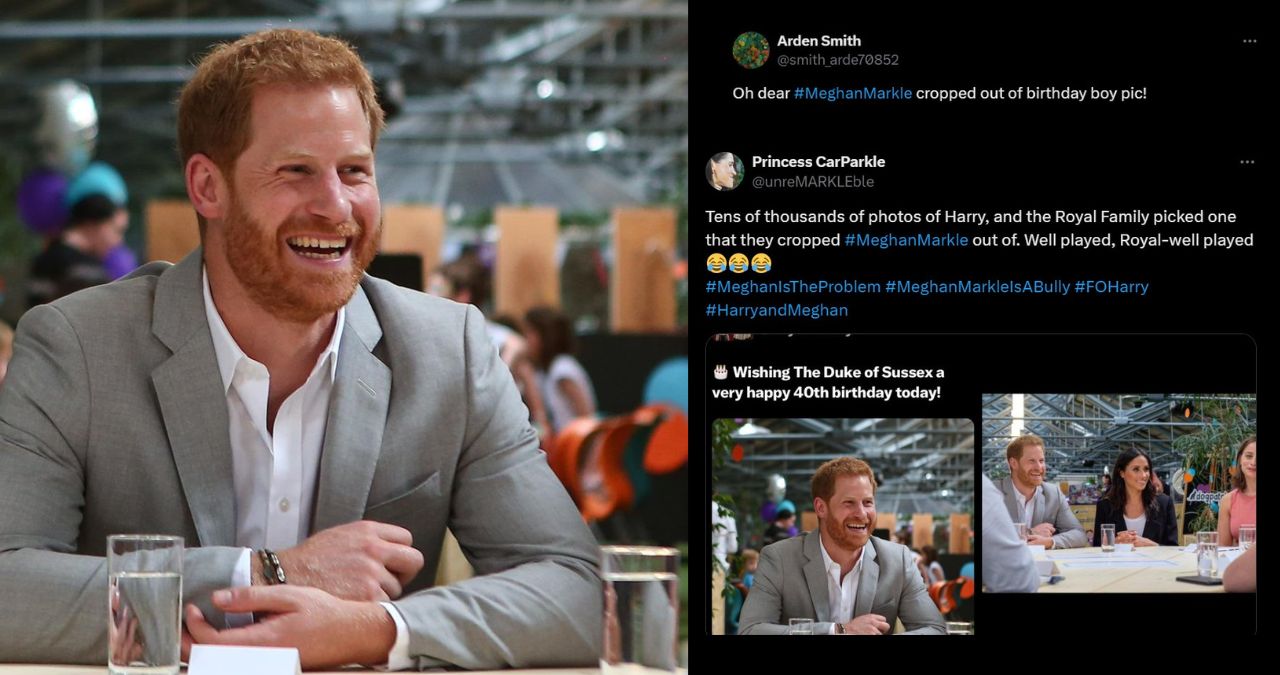In a surprising twist, the Royal Family has found itself at the center of a social media storm following the release of a birthday photo of Prince Harry.
The image, shared on Twitter and possibly Instagram, has ignited debates among fans and critics alike, particularly due to the noticeable absence of Meghan Markle in the frame.
This incident raises questions about the dynamics of royal engagements and the media’s portrayal of the couple.
When it comes to royal appearances, photographers are usually present to capture various moments.
These professionals often have access to images from reputable editorial agencies like Getty Images, Shutterstock, and Reuters.
However, editorial photos come with hefty price tags and strict standards that must be adhered to.
In this case, the image of Harry was taken during one such engagement, where the photographer snapped multiple shots.
It appears that the photographer, rather than the palace, made the decision to crop Meghan out of the photo, highlighting Harry’s striking appearance.
This practice is not uncommon; photographers frequently create additional versions of popular images for distribution.
The cropped version of Harry’s photo was made available, leading many to speculate about the reasons behind Meghan’s exclusion from the image.
Interestingly, even established publications like The Telegraph jumped on the narrative that Meghan had been intentionally left out.
However, those familiar with the process know that cropping often occurs for various reasons, and it doesn’t always signal a deliberate slight.
The reality is that photographers capture numerous images during engagements, and sometimes the best shots are chosen for public release.
As someone who frequently sifts through images for news stories, I can attest to the vast number of photos available within editorial archives.
It’s not uncommon to find unique shots that haven’t made their way into mainstream media.
The goal is to present fresh content, especially when covering well-known figures like Harry and Meghan.
For instance, I recently discovered a lesser-seen image of Meghan that worked perfectly for a recent project.
The conversation surrounding this cropped photo of Harry serves as a reminder of how misinformation can spread quickly.
Many people may not fully understand the nuances of photo selection and editing, leading to misunderstandings about the intentions behind such decisions.
This incident highlights the importance of being informed about how the media operates, especially regarding high-profile figures.
Furthermore, it’s essential to recognize that the media often reuses popular images due to the high costs associated with acquiring new editorial photos.
In many cases, these images can only be used for a limited time, which contributes to the repetition of certain visuals in news coverage.
This cycle can lead to the same pictures being circulated, sometimes without context or clarity.
In navigating the world of royal news, it’s crucial to approach stories with a discerning eye.
While sensational headlines may grab attention, understanding the underlying processes can provide a clearer picture of what’s really happening.
The debate over Harry’s birthday photo is just one example of how easily narratives can be shaped by perception rather than fact.
As we continue to follow the lives of Harry and Meghan, it’s vital to remain aware of the complexities involved in media representation.
The scrutiny they face is immense, and every detail can become fodder for speculation.
This cropped photo incident serves as a case study in how quickly assumptions can form and spread, often based on incomplete information.
In the end, staying informed about the mechanisms behind image selection and media reporting can empower audiences to better interpret the stories they consume.
As the landscape of royal news continues to evolve, let’s hope for more transparent discussions and less reliance on sensationalism.
After all, the truth often lies beneath the surface, waiting to be uncovered.
Related Stories

